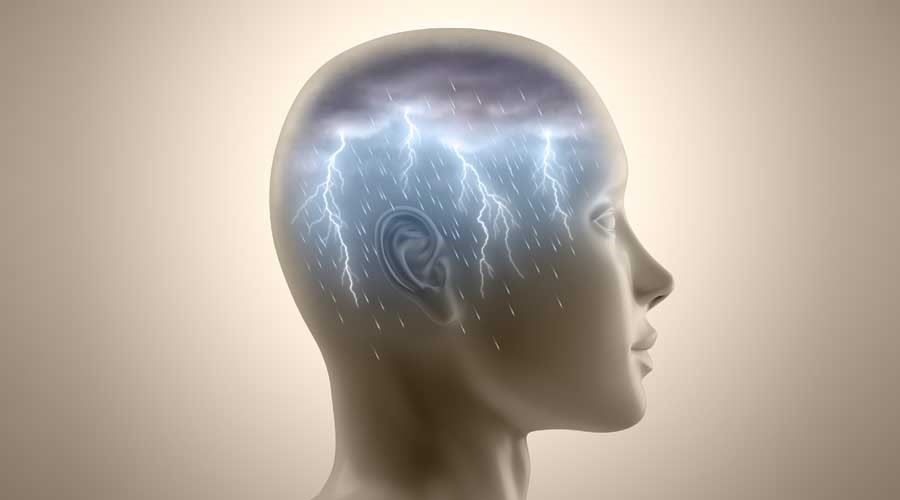
Cymbalta® Withdrawal and “Brain Zaps”
We are no longer accepting new Cymbalta withdrawal cases.

 In his book, The Antidepressant Solution, Joseph Glenmullen, M.D., of Harvard Medical School, describes a common symptom of withdrawal from SSRI and SNRI antidepressants, referred to by many as “brain zaps.”
In his book, The Antidepressant Solution, Joseph Glenmullen, M.D., of Harvard Medical School, describes a common symptom of withdrawal from SSRI and SNRI antidepressants, referred to by many as “brain zaps.”
“These are lightening-like jolts inside the head that make patients feel as if they are having a dangerous neurological event, such as a stroke…. In some patients … bending the neck brings on waves of electric shock-like sensations down the spine, arms, and legs.”
Dr. Glenmullen gives a detailed report of a patient who experienced shooting electric shock sensations, accompanied by severe shaking and trembling. An electroencephalogram (“EEG”) provided evidence the woman was having seizures and she was put on anticonvulsants.
In 2007, two British psychiatrists wrote an article describing “sensory symptoms (e.g. sensations resembling electric shocks) or symptoms of disequilibrium (e.g. dizziness) in brief bursts when they move their head or eyes. Such symptoms are highly characteristic of primary discontinuation syndrome” (emphasis added).
What Is a Brain Zap From an Antidepressant?
The exact cause of brain zaps and other withdrawal effects of Cymbalta are unknown, but they are thought to be related to changes that occur in the brain when exposed to antidepressants.
Nerve signals are transmitted from one cell to another through the release of a chemical messenger, called a neurotransmitter, into the space between the sending and receiving cells. The receiving cell has receptors into which the neurotransmitter fits like a key in a lock, triggering complex reactions in the cell. Antidepressants like Cymbalta increase the neurotransmitters serotonin and norepinephrine (similar to adrenaline) in the gap between nerve cells. The cells have multiple reactions to this increase. The sending cell becomes “desensitized” – it doesn’t fire as much – and the receiving cells decrease the number of receptors.
In 1996, Steven Hyman, former director of the National Institute of Mental Health, described these adjustments in a paper published in the American Journal of Psychiatry. Chronic administration of antidepressants and antipsychotics, he explained, creates changes in the normal functioning of the brain that “likely exceed the strength or time course of almost any natural stimulus.” The cells, responding to what Hyman called the “significant environmental challenges” of the drugs, try to adjust, leading to “substantial and long-lasting alterations in neural function.” Antidepressants produce their effects, wrote Hyman, by “altering the functional activity of critical neural circuits in the brain,” producing a state “which may be qualitatively as well as quantitatively different from the normal state.” In short, after chronic administration of antidepressants, the brain is functioning abnormally.
Cymbalta Treatment and Brain Zaps
Brain zaps and other symptoms of withdrawing from Cymbalta therefore can be seen as the brain’s reaction to suddenly being removed from the abnormal environment to which it has adapted, like a deep sea diver who returns to the surface too quickly. The authors of a 2003 paper in the journal Psychopharmacology suggested that paresthesia (sensations of pricking, tingling, or creeping on the skin, including electric shock sensation in the brain) resulting from antidepressant withdrawal may be connected to the role that serotonin plays in controlling muscle movement and sensory function, noting that shock sensations often intensify with movement. “Significant alteration of neuronal activity may occur during treatment, possibly increasing with higher dosages or longer duration of treatment,” they wrote.
Our Case Results

-
$265 Million Settlement Fatal Train Crash
In 2016, Wisner Baum attorney Timothy A. Loranger and six other attorneys in the Plaintiffs’ Management Committee were able to secure a $265 million settlement for victims of the 2015 Amtrak 188 derailment in Philadelphia, one of the largest in the U.S. for 2016.
-
$14 Million Settlement A Major US Plane Crash
Wisner Baum obtained a $14 million settlement for the death of a passenger in a major US plane crash.
-
$12 Million Settlement Helicopter Crash
Wisner Baum secured a $12 million settlement for a passenger who was injured in a helicopter crash.
-
$10 Million Settlement A Major Foreign Plane Crash
Wisner Baum obtained a $10 million settlement for the death of a passenger in a major foreign plane crash.
-
$2.0 Billion Verdict Personal Injury
In May of 2019, the jury in the case of Pilliod et al. v, Monsanto Company ordered the agrochemical giant to pay $2.055 billion in damages to the plaintiffs, Alva and Alberta Pilliod, a Bay Area couple in their 70s.
-
$80 Million Verdict Personal Injury
Wisner Baum attorneys served on the trial team in the case of Hardeman v. Monsanto Company, which resulted in an $80 million jury verdict for the plaintiff, Edwin Hardeman.

Client-Focused Representation
REVIEWS & TESTIMONIALS
We believe our track record speaks for itself. But you don’t have to take our word for it. See what our clients have to say about working with us.
-
"I Can’t Imagine a Better Law Firm"
Multiple lawyers recommended Wisner Baum to me and I have been consistently impressed with the quality of their work.
- Best Law Firms Survey -
"They Are About Changing the Systems..."
Wisner Baum are not only amazing attorneys but more importantly, they are activists. They are about changing the systems which got us into trouble in the first place. They understand their role in the process of making change.
- Kim Witczak -
"Top Legal Minds in the Country"
The Wisner Baum firm has some of the top legal minds in the country; they are driven, determined, trustworthy, ethical and passionate.
- From Best Lawyers® Best Law Firms





